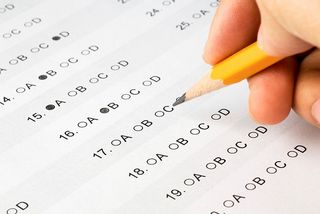
Are people in some countries more generally dishonest than people in other countries? This question has been examined by two international teams of researchers—and both teams have come to a similar
conclusion.

Source: Alberto G./Creative Commons 3.0
The game consisted of a single flip of a coin that had a black side and a white side. If the coin landed with the white side up, the student received a chocolate truffle as a prize.
Each student flipped the coin in private and then reported the result to an experimenter. The experimenter didn't know if a particular student reported the result truthfully or not. But—and here’s the clever part—the experimenter could accurately estimate the level of cheating in the group as a whole by simply counting the total number of chocolate truffles handed out as prizes.
If 90 students flip a coin, the laws of probability dictate that about half (45) of the coins will land on white and receive a prize. If almost all of the students report a prize-winning result, then we have evidence for a high level of cheating in that group.
Somewhat surprisingly, Pascual-Ezama and his team found that, across all 16 countries, only 57% of the students reported white—just 7 percentage points higher than what we would expect if everyone told the truth. Among those students who would have been tempted to lie—because their coin landed on black—86% of them resisted the temptation and told the truth.
Some of the 16 countries cheated a little more and some a little less, but the differences were not statistically significant. Overall, the researchers observed similarly low levels of dishonesty across countries.
Recently, Heather Mann at Duke University and her colleagues conducted a similar study, but they used a different task and recruited many more participants in each of 5 countries.2
In each country, approximately 220 students at a local university and approximately 200 native residents at coffee shops agreed to play a game on an iPad that involved rolling a virtual die 20 times. Before rolling the die, participants were instructed to mentally choose a side of the die, either the top side (face) or the bottom.
After each roll of the die, the iPad displayed the number of dots on the top and bottom sides of the die. The participants knew they would be paid a small amount of money per dot on the side they privately chose in advance. So if a participant picked the “wrong” side of the die, he or she could cheat by claiming to have picked the higher earning side.
As in the earlier study, the experimenters could not determine if a particular participant cheated or not, but they could closely estimate the overall level of cheating in a country by comparing the number of “higher earning” choices reported with the number expected by chance.
Across all 5 countries, participants said they had picked (in advance) the higher earning side of the die in 58% of the trials. This result is 8 percentage points higher than expected if everyone tells the truth and no one cheats. In other words, when the result of the rolled die was unfavorable, participants told the truth about 84% of the time—a result remarkably similar to that of the earlier study in 16 countries.
As before, some countries cheated more and some less, but the differences were small and not statistically significant. Overall, the researchers observed similarly low levels of dishonesty across countries.
According to Mann and her colleagues, the results of these two cross-national studies provide empirical support for the theory of self-concept maintenance. The theory says we’re motivated by external incentives to cheat, but we’re also motivated by an internal desire to see our self as a good, decent, moral person. A low level of dishonesty (so-called “incomplete cheating”) is the result of our attempt to find a happy medium between the external rewards for dishonest behavior and the internal rewards for honest behavior.
Mann, H., Garcia-Rada, X., Hornuf, L., Tafurt, J., & Ariely, D. (2016). Cut from the same cloth: Similarly dishonest individuals across countries. Journal of Cross-Cultural Psychology, 47(6), 858-874.

No comments:
Post a Comment